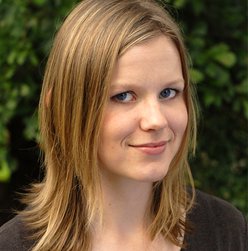
As part of the CSCW 2010 blogging team, I’m writing a series featuring work presented at the conference by some of the newest members of the field. This segment is the second of this series.
At the CSCW 2010 conference, 13 PhD students received invitations to participate in the Doctoral Colloquium, an event in which new scholars discuss their work with a panel of experts. In addition to being a great opportunity for students, the Doctoral Colloquium highlights some of the most exciting work in the field from promising young scholars. In today’s post, I’m highlighting the work of two invited participants who are studying social and technological infrastructures that can enable and hinder collaboration.
What does it take for design teams to collaborate in spite of geographical, disciplinary and cultural differences? During the conference, I had the chance to chat with Lilly Irani, a PhD candidate at University of California-Irvine, who is thinking about these questions.
Lilly studies infrastructures necessary to support design teams that operate out of India and work with clients who are also in Europe and the United States. Lilly started with seven weeks of immersive fieldwork observing a Delhi-based design team. She lived in the homes of her participants and went to work with them daily. As a researcher, she mostly observed, but she also helped with small tasks around the office, shopping for office supplies and tools, and photographing and filming user research done by the firm. Something Lilly found in her initial fieldwork is that short digital films (e.g. posted on vimeo) can help in communicating with foreign design research clients. In the words of Lilly, “You can post films on vimeo and really engage someone 12,000 miles away in a way that you can’t with a document or a phone call. If a picture is worth a 1000 words, a film is worth 10000 and it’s a lot more likely, if the film is good, that the intended viewer (the client) will watch it all the way through. “
Lilly’s work underscores how digital video and the Internet can make it possible to communicate effectively despite barriers of distance, language, time zone, or culture. In the fall of 2010, she’ll be returning to India for 6-9 months for more observation. To learn more about Lilly’s research, please visit her website
Chris LeDantec, another participant in the Doctoral Colloquium, is tackling an equally challenging, but more local problem. Can technologies help the urban homeless get back on their feet?
To better understand the needs of the urban homeless, Chris spent the last few years conducting immersive fieldwork in Atlanta, GA, interacting with the homeless, as well as care providers and social institutions who provide support services. Currently, he’s examining opportunities for technologies to assist homeless people and care providers interact and manage some of the challenges facing them, such as information overload, maintaining social connections, coping with conflict, and preserving and accessing knowledge from fellow homeless and community organizations. Said Chris, “designing for marginalized users, like the homeless, also means designing for the social and physical infrastructures on which they depend.” For more information about Chris’s work, please visit his website.
Although their sites of study are radically different, the research Lilly and Chris do highlights how social and technological infrastructures can both support and hinder collaborations. And more broadly, Lilly and Chris represent an emerging breed of researchers in the CSCW space. They hold both a deep understanding of technology design and development; both have extensive training in computer science and engineering. Yet their work also requires a deep understanding of of social concerns, and application of social science methods to study technological and social infrastructures. I’m excited to see this blend of social and technical research appearing at the conference, and look forward to what’s in store for CSCW 2011!
Erika Shehan Poole
![]() is a PhD candidate in human-centered computing at Georgia Tech. Her research focuses on how groups collaborate to use, maintain, and make sense of computing technologies; areas of study have included home technology maintenance practices, public understandings of emerging technologies, workplace adoption of collaboration software, and collaborative gaming technologies for improving health and wellness. Erika holds a BS degree in computer science from Purdue University and an MS in computer science from Georgia Tech.
is a PhD candidate in human-centered computing at Georgia Tech. Her research focuses on how groups collaborate to use, maintain, and make sense of computing technologies; areas of study have included home technology maintenance practices, public understandings of emerging technologies, workplace adoption of collaboration software, and collaborative gaming technologies for improving health and wellness. Erika holds a BS degree in computer science from Purdue University and an MS in computer science from Georgia Tech.



Join the Discussion (0)
Become a Member or Sign In to Post a Comment